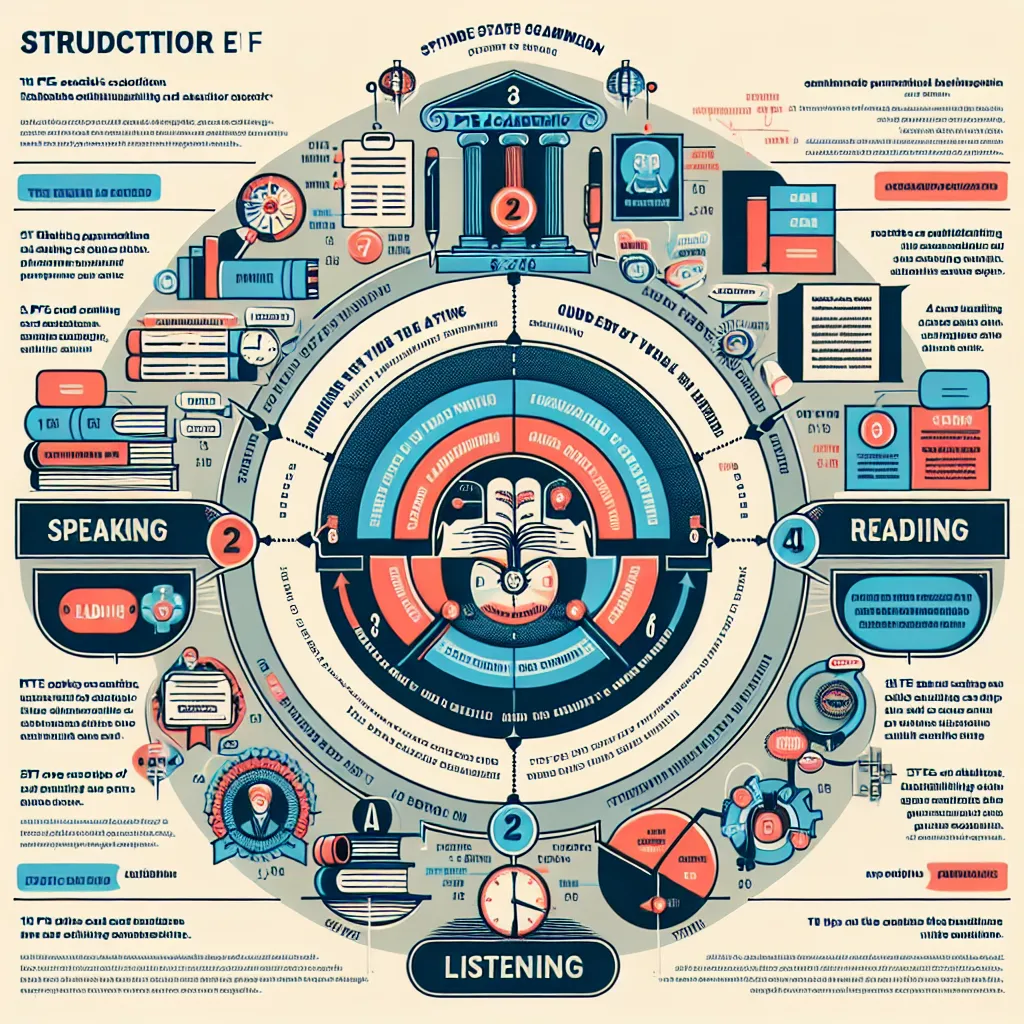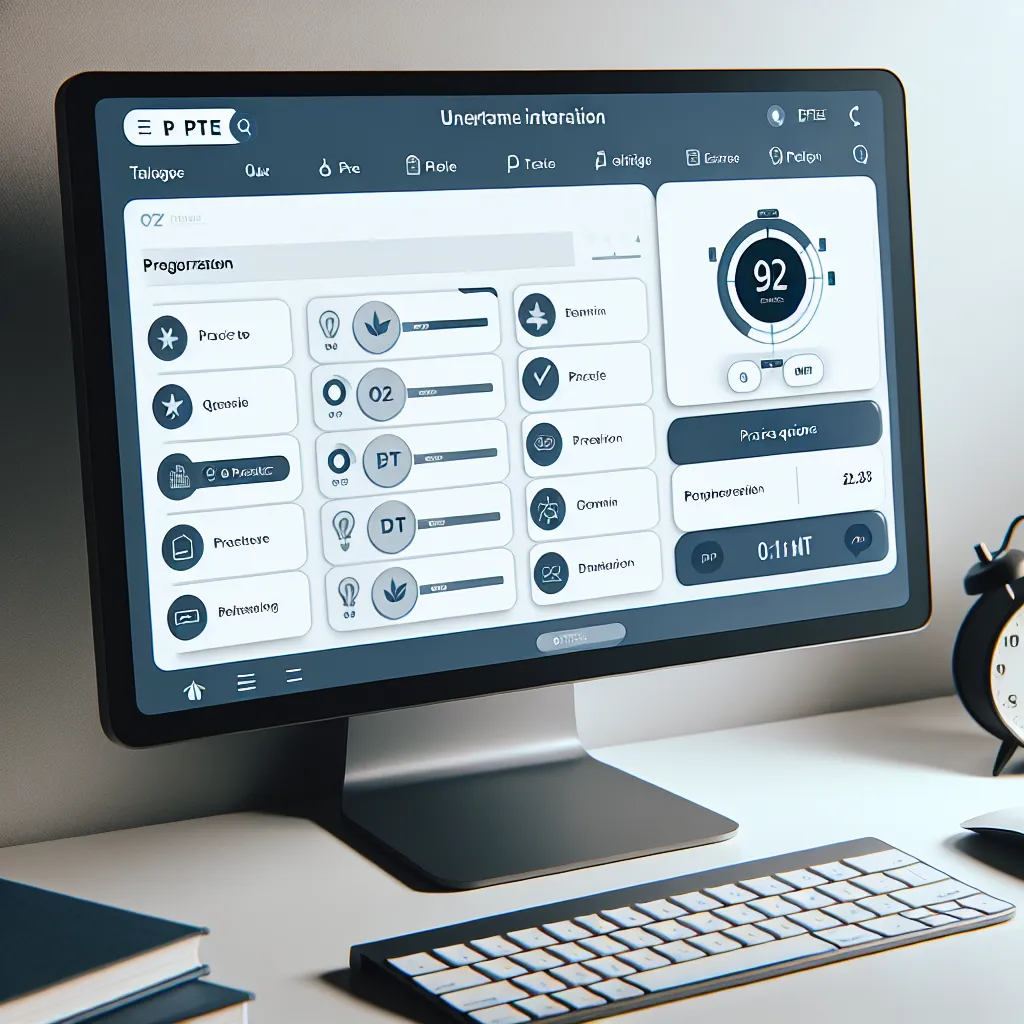Preparing for the Pearson Test of English (PTE) can be a challenging yet rewarding experience. To excel in this exam, it’s crucial to employ effective study techniques that align with the test’s structure and scoring criteria. In this comprehensive guide, we’ll explore the most effective study techniques for PTE, helping you maximize your preparation and boost your chances of success.
Understanding the PTE Exam Structure
Before diving into study techniques, it’s essential to understand the PTE exam structure. The PTE Academic test consists of three main parts:
- Speaking and Writing (77-93 minutes)
- Reading (32-41 minutes)
- Listening (45-57 minutes)
Each section tests different language skills, and understanding this structure is key to developing an effective study plan.
 PTE Exam Structure
PTE Exam Structure
Effective Study Techniques for PTE
1. Create a Structured Study Plan
One of the most effective techniques for PTE preparation is creating a well-organized study plan. This approach helps you cover all aspects of the exam systematically and ensures you’re not overlooking any critical areas.
- Set realistic goals: Determine your target score and break it down into smaller, achievable milestones.
- Allocate time wisely: Dedicate more time to your weaker areas while maintaining practice in your stronger ones.
- Use a study calendar: Schedule your study sessions, practice tests, and review periods.
2. Utilize Official PTE Resources
Official PTE materials are invaluable for your preparation as they accurately reflect the exam format and difficulty level.
- Official PTE Academic Practice Tests: These provide a realistic exam experience and help familiarize you with the question types.
- PTE Academic Official Guide: This comprehensive resource offers insights into the scoring criteria and test-taking strategies.
- Pearson Practice App: Use this app for on-the-go practice and to track your progress.
3. Improve Your English Language Skills Holistically
While focusing on exam-specific techniques is important, don’t neglect overall language improvement.
- Read extensively: Engage with a variety of English texts, including academic articles, newspapers, and literature.
- Listen actively: Practice with English podcasts, news broadcasts, and academic lectures.
- Speak regularly: Find language exchange partners or join English-speaking groups to practice conversation skills.
- Write consistently: Start a blog or journal in English to improve your writing skills.
4. Master Time Management
Effective time management is crucial for success in the PTE exam. Practice these techniques:
- Use a timer during practice sessions to simulate exam conditions.
- Learn to allocate appropriate time for each question type.
- Practice quick decision-making skills, especially for multiple-choice questions.
5. Focus on Specific PTE Question Types
Each section of the PTE exam contains unique question types. Familiarize yourself with these and practice targeted strategies for each.
- Speaking: Practice pronunciation, fluency, and content organization for tasks like Read Aloud and Describe Image.
- Writing: Develop templates for essay writing and summarizing written text.
- Reading: Improve your skimming and scanning skills for tasks like Multiple Choice and Re-order Paragraphs.
- Listening: Enhance your note-taking skills for Summarize Spoken Text and Write From Dictation.
 PTE Question Types Practice
PTE Question Types Practice
6. Use Technology and Online Resources
Leverage technology to enhance your PTE preparation:
- PTE preparation websites: Platforms like E2Language and PTE Tutorials offer comprehensive study materials and practice tests.
- Language learning apps: Use apps like Duolingo or Babbel to improve your general English skills.
- YouTube tutorials: Watch video explanations of PTE strategies and sample answers.
7. Practice Regular Self-Assessment
Continuous self-assessment is key to tracking your progress and identifying areas for improvement.
- Take regular mock tests under exam conditions.
- Analyze your performance after each practice session.
- Keep a log of your common mistakes and work on eliminating them.
8. Develop Test-Taking Strategies
Adopt specific strategies for the PTE exam:
- Learn keyboard shortcuts to save time during the computer-based test.
- Practice stress management techniques to stay calm during the exam.
- Familiarize yourself with the computer interface used in the PTE exam.
9. Engage in Group Study Sessions
Collaborative learning can be highly effective:
- Join PTE study groups online or in-person.
- Practice speaking tasks with peers to gain confidence.
- Share resources and discuss challenging question types with other test-takers.
Important Considerations
- Consistency is key: Regular, focused practice is more effective than sporadic, intense study sessions.
- Balance is crucial: While it’s important to focus on PTE-specific skills, don’t neglect overall English language improvement.
- Avoid burnout: Take regular breaks and maintain a healthy lifestyle to support your study efforts.
Next Steps
Now that you’re equipped with these effective study techniques for PTE, it’s time to put them into action:
- Start by creating your personalized study plan.
- Gather official PTE resources and reputable third-party materials.
- Begin with a diagnostic test to identify your starting point.
- Implement the techniques discussed, focusing on your areas of improvement.
- Regularly assess your progress and adjust your study plan as needed.
Remember, success in the PTE exam is not just about memorizing information, but about developing robust language skills and effective test-taking strategies. Stay motivated, be consistent in your preparation, and approach your studies with a positive mindset. With dedication and the right techniques, you can achieve your desired PTE score.
We encourage you to share your PTE preparation experiences or ask any questions in the comments section below. For more insights on language learning and exam preparation, explore our other articles on LearnEnglish.NET.




